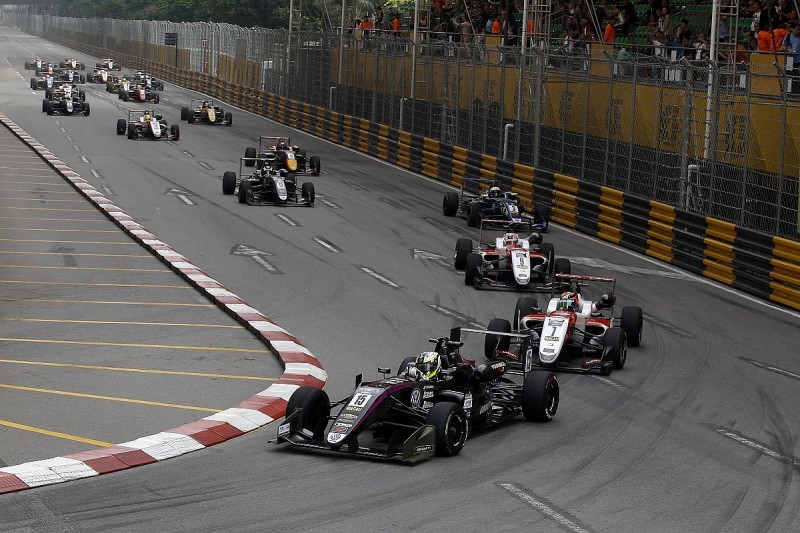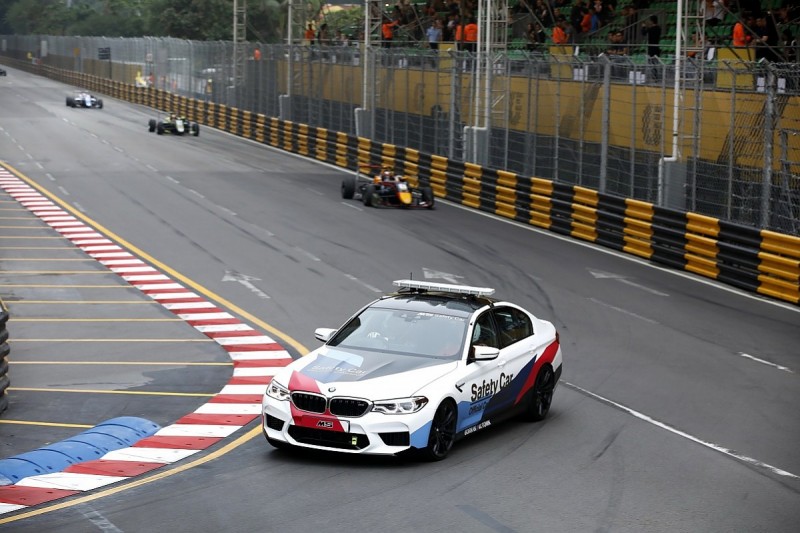Macau Grand Prix: The factors that saved Sophia Florsch's life
Sophia Florsch's horrifying Macau Grand Prix accident left her with a spinal fracture, but there was relief that the outcome was not worse for her or the others involved

The Macau organisers have made it clear that they will work with the FIA to ensure that lessons from the crash are taken on board as safety improvements never stop in motor racing.

Although Florsch's accident was not caught by the event's official television cameras, footage of the incident quickly emerged on social media as fans around the track posted videos online.
The accident was triggered by Florsch running in to the back of Jehan Daruvala - who according to the following Guan Yu Zhou appeared to slow for yellow warning flags.
The Chinese driver said: "Sophia was really close to Jehan, so when Jehan braked early she had no time to react.
"She hit Jehan's right-rear, and that spun her around straight into Lisboa, and she flew into the other car."
The clash with Daruvala was enough to spear Florsch to the right and she struck the crash barriers, which ripped the left-hand side wheels off her car.
At the point in which Florsch should have been slowing, she was effectively left without brakes heading towards Lisboa, with speed trap figures registering her speed at 276.2km/h (171.2mph).
Macau had installed new kerbs at Lisboa this year as part of a move to stop drivers - especially in touring cars and GT cars - from abusing track limits at the tight right hander. The comparison between the kerbs in 2017 and this year can be seen below.
2017

2018

The new blue sausage kerbs, which are frequently seen in Formula 1, are slightly raised and Florsch's trajectory meant she struck the kerbs, which lifted her car slightly into the air.
Bizarrely, the car being launched into the air proved to be a fortunate factor in helping both her and Japanese racer Sho Tsuboi escape what could have been a much more serious accident.
Judging from video footage that has appeared online, the lift from the kerbs raised Florsch car's enough to clip Tsuboi's car higher up - rather than being a direct strike on the side of the cockpit.
It is this type of accident - similar to the 2002 Austrian Grand Prix when Nick Heidfeld speared in to Takuma Sato - that has been a driving force in the FIA's push for improved cockpit protection.
Even though she was in the air, Florsch's wheels struck the rollhoop of the TOM'S car, as photos that emerged later on in the weekend showed.
The outcome of the accident could have been very different had Florsch directly hit the TOM'S side-on or run at that speed into the tyre barriers - even with the strength of the F3 cars involved that have been important in saving the drivers.
Having been launched over the kerbs and Tsuboi's car, Florsch's car flew backwards into the catch fencing at Lisboa.
It is understood that the height of this fencing was raised several years ago and this factor may have played a crucial part in saving her life.
Although she went through the fencing, the fence did its job in absorbing a lot of the energy of the crash.
This is clear from the footage as the impact bent a number of the fence posts at that section of the track (see photograph below), showing the amount of energy that had been absorbed.

With the speed of her car having been reduced, it then struck the photographer's bunker backwards, before being flipped up.
Miraculously, the car appears to have impacted the bunker with the roll hoop and cockpit area near an opening rather than a solid part of the structure.
Having been stopped by the bunker, Florsch's car then fell to the ground where she was covered in her fire extinguisher that had gone off, but was immediately attended to by medical crews.
Although two photographers and marshals were also injured in the accident, Macau's decision to have a bunker at that corner - a call made several decades ago - rather than leave media members exposed ensured there was not a worse outcome.
The armco-protected structure did its job in standing up well to a direct strike. Plus, as it was early in the second race, it was also not as busy as it normally is for the actual race start.
Had there been no bunker there to absorb the car, Florsch would almost certainly have flown into more solid structures beyond.
Macau organisers and the FIA will now look into the accident and evaluate necessary changes to improve standards for 2019 if they are required.
A statement issued by the Macau Grand Prix Organising Committee said: "In the future, the MGPOC will continue to follow the guidelines of the FIA and take all necessary measures to hold the event."

Be part of the Autosport community
Join the conversationShare Or Save This Story
Subscribe and access Autosport.com with your ad-blocker.
From Formula 1 to MotoGP we report straight from the paddock because we love our sport, just like you. In order to keep delivering our expert journalism, our website uses advertising. Still, we want to give you the opportunity to enjoy an ad-free and tracker-free website and to continue using your adblocker.















Top Comments